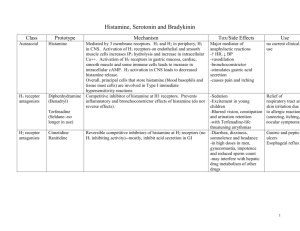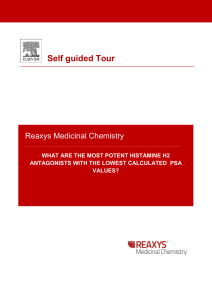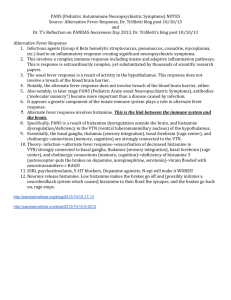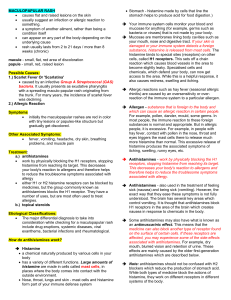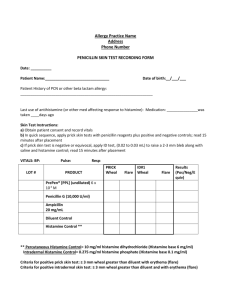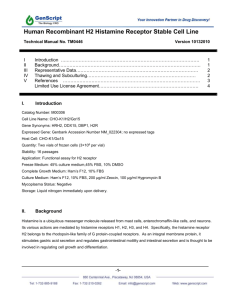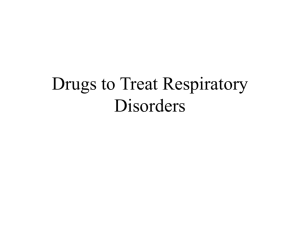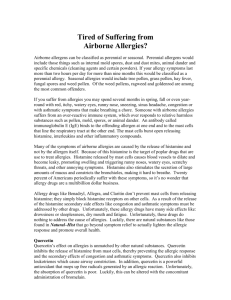Lewis Triple Response
advertisement
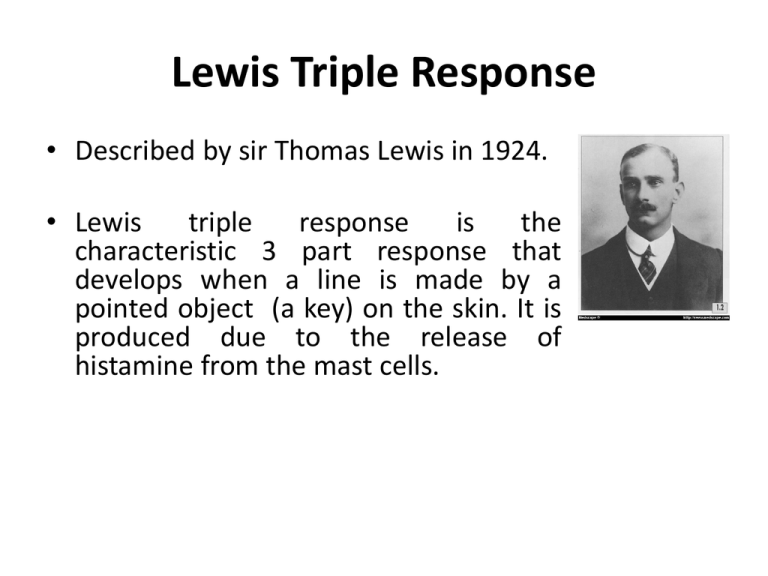
Lewis Triple Response • Described by sir Thomas Lewis in 1924. • Lewis triple response is the characteristic 3 part response that develops when a line is made by a pointed object (a key) on the skin. It is produced due to the release of histamine from the mast cells. • Trauma may release an antigen that interacts with the membrane-bound immunoglobulin E of mast cells, which release inflammatory mediators, particularly histamine, into the tissues. This causes small blood vessels to leak, allowing fluid to accumulate in the skin. Inflammatory Response Components of the Triple Response 1.Red reaction: red line (transient local vasodilation due to histamine), appears in few seconds. 2.Wheal: localized edema in the region of the redline (increased capillary permeability and exudation of fluid from capillaries and venules due to histamine release), appears in 1 min. 3.Flare: spreading redness extending beyond the red line (due to axon reflex), appears slowly. - Three cell types – smooth muscle in the microcirculation – endothelium: capillary or venule – sensory nerve endings Receptor types Type Location Function H1 Smooth m., endothelium, CNS Bronchoconstriction, Contraction of GIT, Vasodilatation Increased capillary permeability leading to edema Pain and itch H2 Parietal cells, vascular smooth m. Vasodilatation, gastric acid secretion H3 CNS Modulate the release of other neurotransmitters H4 Basophils, BM, Thymus, spleen Chemotaxis Subgroups of Histamine Receptor Blockers What will occur with Antihistamine OR Local Anesthetics?
